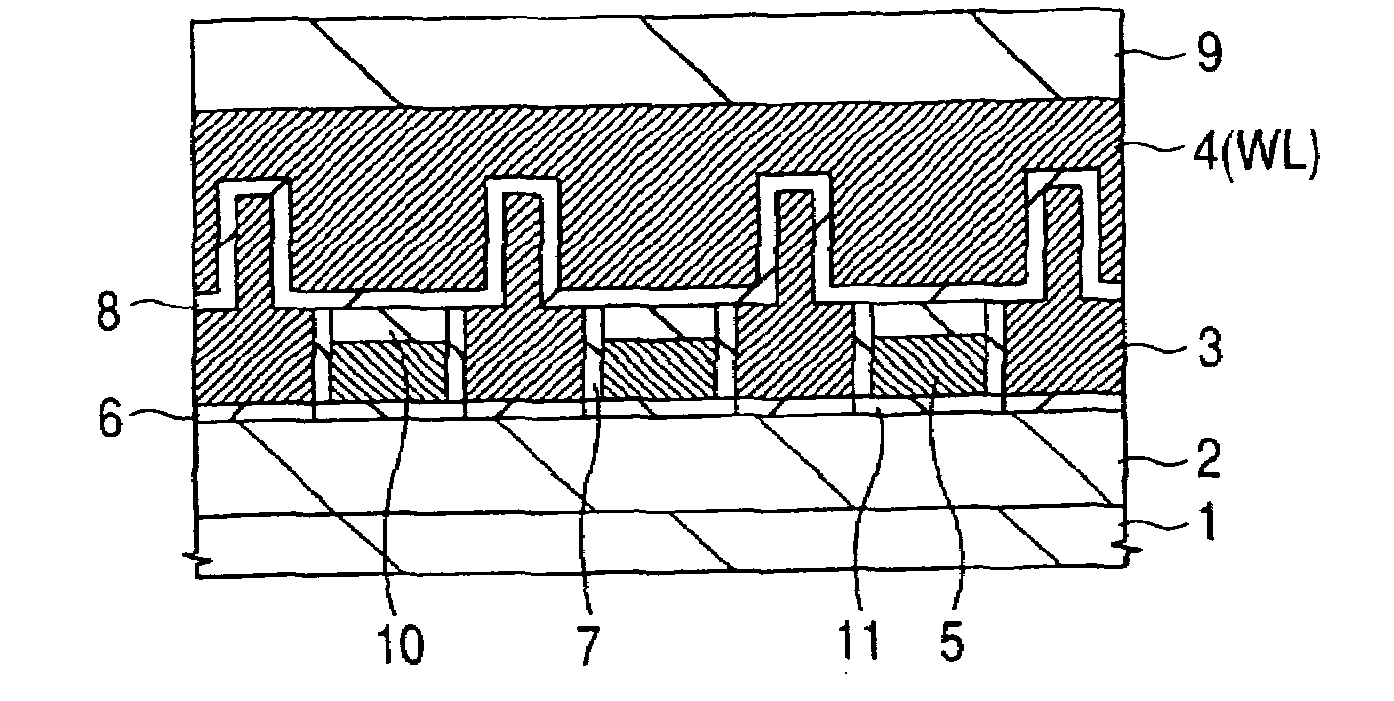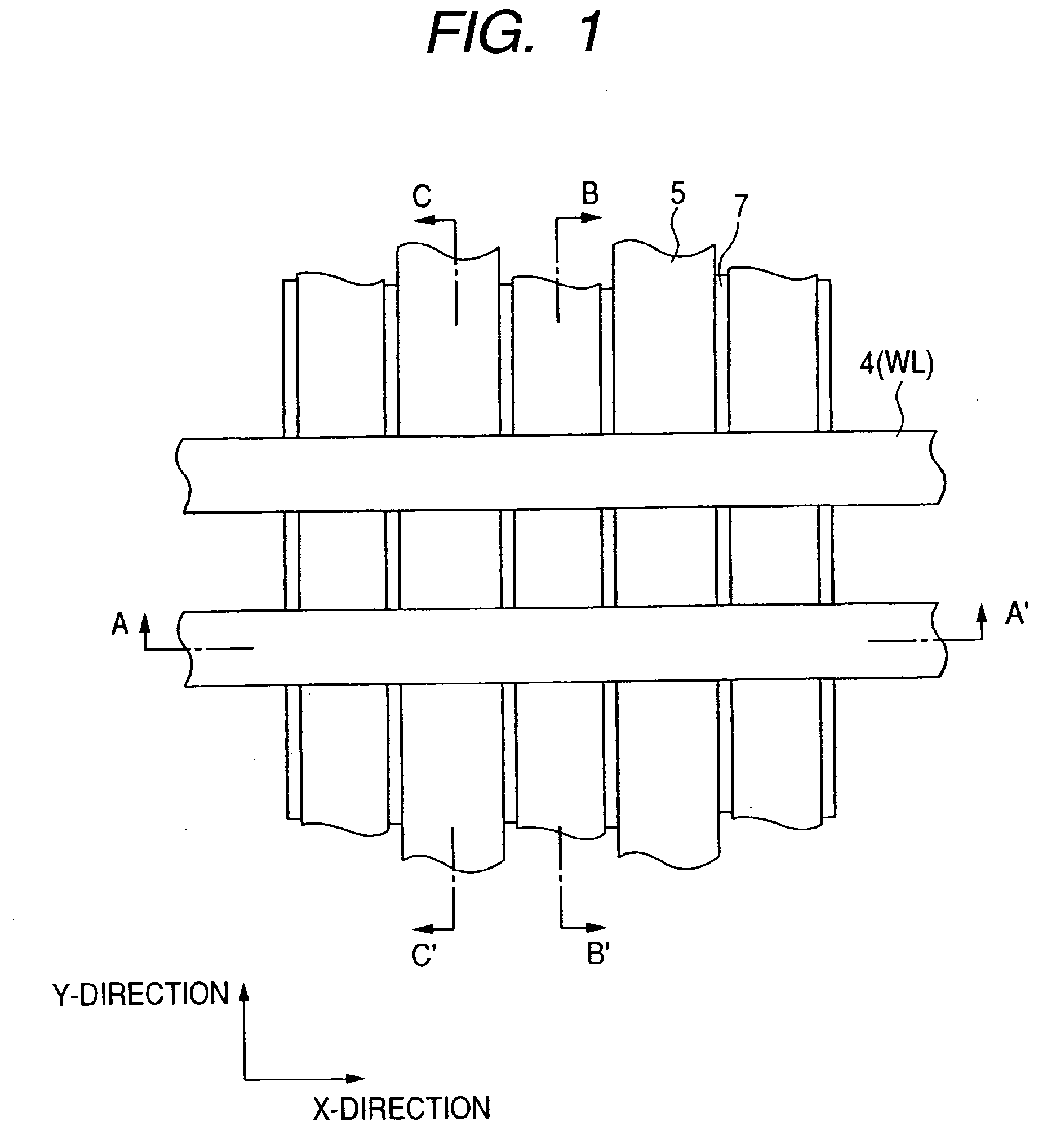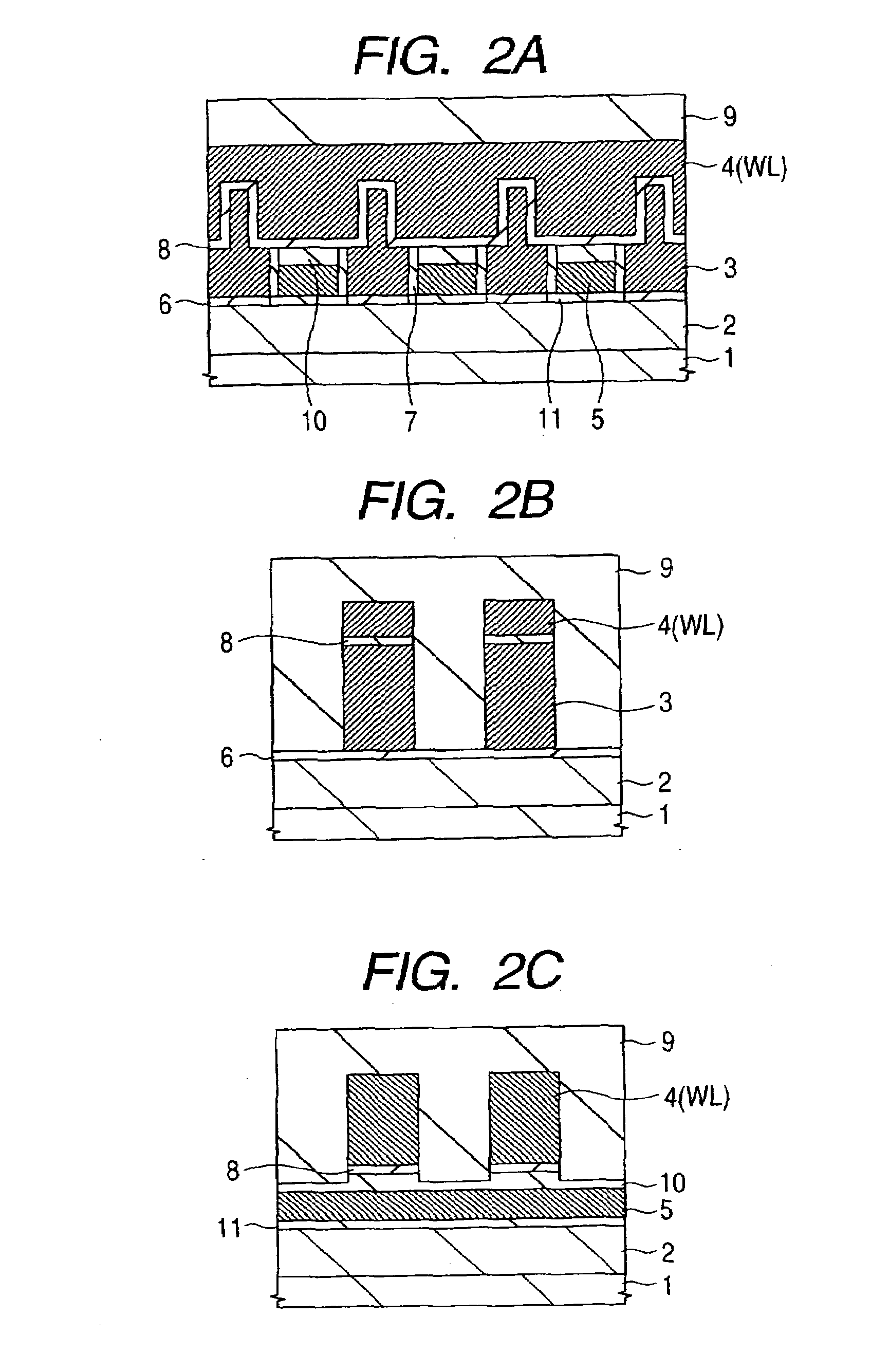Nonvolatile semiconductor memory device and manufacturing method thereof
a non-volatile, memory device technology, applied in semiconductor devices, transistors, instruments, etc., can solve the problems of increasing the capacitive coupling between floating gates, the inability to use current and future flash memory, and the reduction of the size of the memory cell, so as to reduce the pitch of the control gate (word line), the effect of reducing the threshold voltage shift of the memory cell and improving programming/erasing performan
- Summary
- Abstract
- Description
- Claims
- Application Information
AI Technical Summary
Benefits of technology
Problems solved by technology
Method used
Image
Examples
first embodiment
[0080]FIG. 1 is a main plane diagram schematically illustrating one example of a nonvolatile semiconductor memory device described in the first embodiment of the present invention. FIGS. 2A, 2B, and 2C are main cross-sectional views at the positions of line A-A′, line B-B′, and line C-C′ of FIG. 1, respectively. FIG. 3 is a schematic circuit diagram of a memory array illustrating the first embodiment of a nonvolatile semiconductor memory device of the present invention. A part of the material section is omitted to make the diagram easy to see.
[0081]The nonvolatile semiconductor memory device described in the first embodiment of the present invention comprises a so-called memory cell of a flash memory, wherein this memory cell comprises a well 2 formed on the main surface of the semiconductor substrate 1, the floating gate (first gate) 3, the control gate (second gate) 2, and the third gate 5.
[0082]The control gate 4 of each memory cell is connected along the line direction (X direct...
second embodiment
[0099]In the aforementioned first embodiment, the shape of the floating gate was made in an inverse T-shape by isotropically etching a part of the stripe-shaped polysilicon film, but it can be made in an inverse T-shape by forming the floating gate in two polysilicon layers.
[0100]FIGS. 13 to 16 are main cross-sections and main plane diagrams schematically illustrating one example of a nonvolatile semiconductor memory device described in the second embodiment of the present invention.
[0101]First, the same as the processes described in FIGS. 5A to 7A of the aforementioned first embodiment, the fourth insulator film 7 is formed along the side walls of the dummy silicon oxide film pattern 12 patterned in a stripe shape, the fifth insulator film 10, and the third gate 5. And then, the polysilicon film 3a which will become the first layer of the floating gate is deposited to completely fill the space of the stripe-shaped pattern. Next, the polysilicon film 3a is partially removed by etch ...
third embodiment
[0109]In the aforementioned second embodiment, the space for forming the polysilicon pattern of the second layer of the floating gate was fabricated by etching back the first layer of the floating gate. On the other hand, in the third embodiment, another example to fabricate a space will be described in which the polysilicon pattern of the second layer is formed
[0110]FIGS. 17 to 22 are main plane diagrams schematically illustrating one example of a nonvolatile semiconductor memory device described in the third embodiment of the present invention.
[0111]First, a p-well 2 is formed on the semiconductor substrate 1, and the gate insulator film 11 with a thickness of about 10 nm is formed on the well 2 by, for instance, a thermal oxidation method (FIG. 17A).
[0112]Next, a phosphorus-doped polysilicon film 5a which will become the third gate, and the silicon nitride film 10a which will become the fifth insulator film are deposited in order (FIG. 17B).
PUM
 Login to View More
Login to View More Abstract
Description
Claims
Application Information
 Login to View More
Login to View More - R&D
- Intellectual Property
- Life Sciences
- Materials
- Tech Scout
- Unparalleled Data Quality
- Higher Quality Content
- 60% Fewer Hallucinations
Browse by: Latest US Patents, China's latest patents, Technical Efficacy Thesaurus, Application Domain, Technology Topic, Popular Technical Reports.
© 2025 PatSnap. All rights reserved.Legal|Privacy policy|Modern Slavery Act Transparency Statement|Sitemap|About US| Contact US: help@patsnap.com



